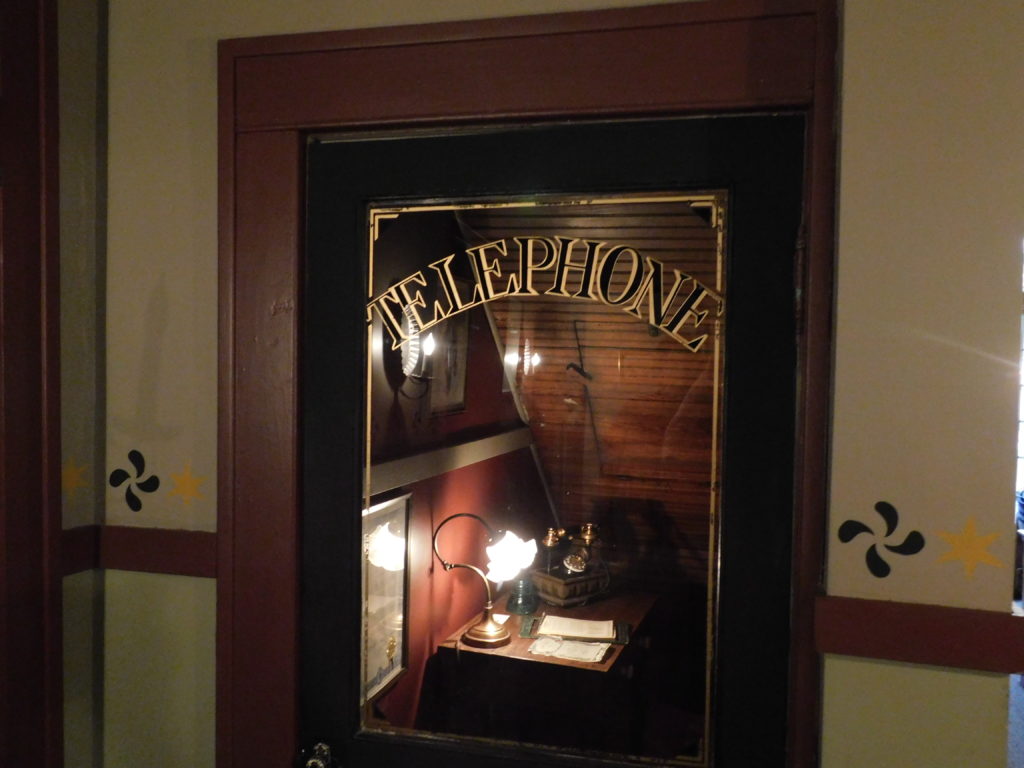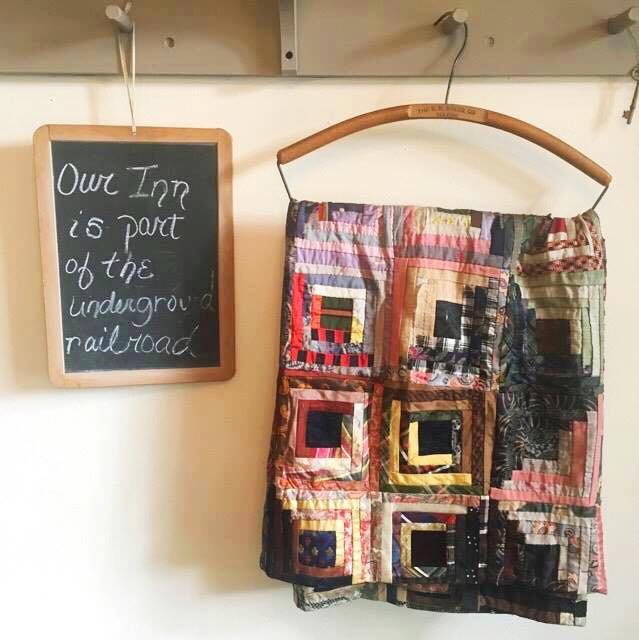Marshall, Michigan and the fight to bring freedom to the slaves

On the first floor of the Inn, there is a telephone booth. This was originally a closet with a wooden door. At the back of this closet is trap door. Behind the trap door is iron grating or grill work that sits in the risers between the stairs.
Marshall was a station on the Underground Railroad and a strong anti-slavery town. In 1846 Kentucky slave chasers tried to capture escaped slave Adam Crosswhite and his family in Marshall. Leading citizens, in turn, arrested the Kentuckians and smuggled the Crosswhite family into Canada. The rescuers were convicted of “depriving a man of his rightful property” in Detroit Federal court in 1847. They paid fines, which they considered a badge of honor. The Crosswhite incident is mentioned on several of the historical markers in town. A few years ago the Marshall Historical Society marked Crosswhite’s grave (he had returned to Marshall after the Civil War) where he rests a few hundred feet from several of his rescuers.
The National House Inn is believed to have been used as part of the Underground Railroad. Here are some clues.
In 1976, our historic Marshall building was purchased and restoration began. When the new owners were measuring the main floor dining room and the basement room directly below it, they found a difference in size. They were excited about possibly finding evidence of the Underground Railroad here. They began to break through the wall with hopes of finding something that would verify that a small room here had been used to hide slaves. They found a 10 foot wide room that went the length of the dining room. There were walls lined with shelves which held bottles. They were now pretty sure that this building could have been used during prohibition, but what about the Underground Railroad? They also found indication on the wall that at one time there may have been a tunnel or outside entrance leading from this room. They have never found such a tunnel. There were no other clues, so they were still not positive of the room’s original origin. But this is not the end of the story.
On the first floor of the Inn, there is a telephone booth. This was originally a closet with a wooden door. At the back of this closet is trap door. Behind the trap door is iron grating or grill work that sits in the risers between the stairs. Someone could sit in this closet and look through the grill work down the hall out the glass front door across the park circle to the building used as the livery in the 1800’s. But from the outside, nobody could see the inside through the grill work into the closet. What a perfect hiding place to put a lookout!
Can’t you just imagine someone hiding slaves in the lower room and sending a lookout upstairs to let you know if anyone suspicious had come into town or if all was clear? If there was no immediate threat, you could secretly take the slaves up the back stairs, out the back door to a waiting wagon to be taken into Detroit and on into Canada.
While we don’t have proof that this building was used as part of the Underground Railroad, these clues lead you to believe that this was a stop along the way to freedom.

An estimated 12 million Africans were forced across the Atlantic Ocean between 1450 and 1808, the year the United States outlawed “importing slaves” from Africa. Michigan’s Underground Railroad stories document the lives of African Americans who escaped enslavement in rural and urban communities in states including Missouri, Tennessee, Louisiana, Arkansas, Virginia and Mississippi. A large number of them ran away from Kentucky by themselves, in pairs and in groups of acquaintances or families.
Those escaping slavery often used political and religious networks of African and European men and women, rather than specific routes. They traveled through places like Ohio, Indiana and Illinois on their way to Michigan. Most traveled by foot and/or wagons. Some made direct journeys from the south, while others spent short or longer times in communities along the way.